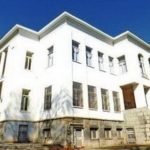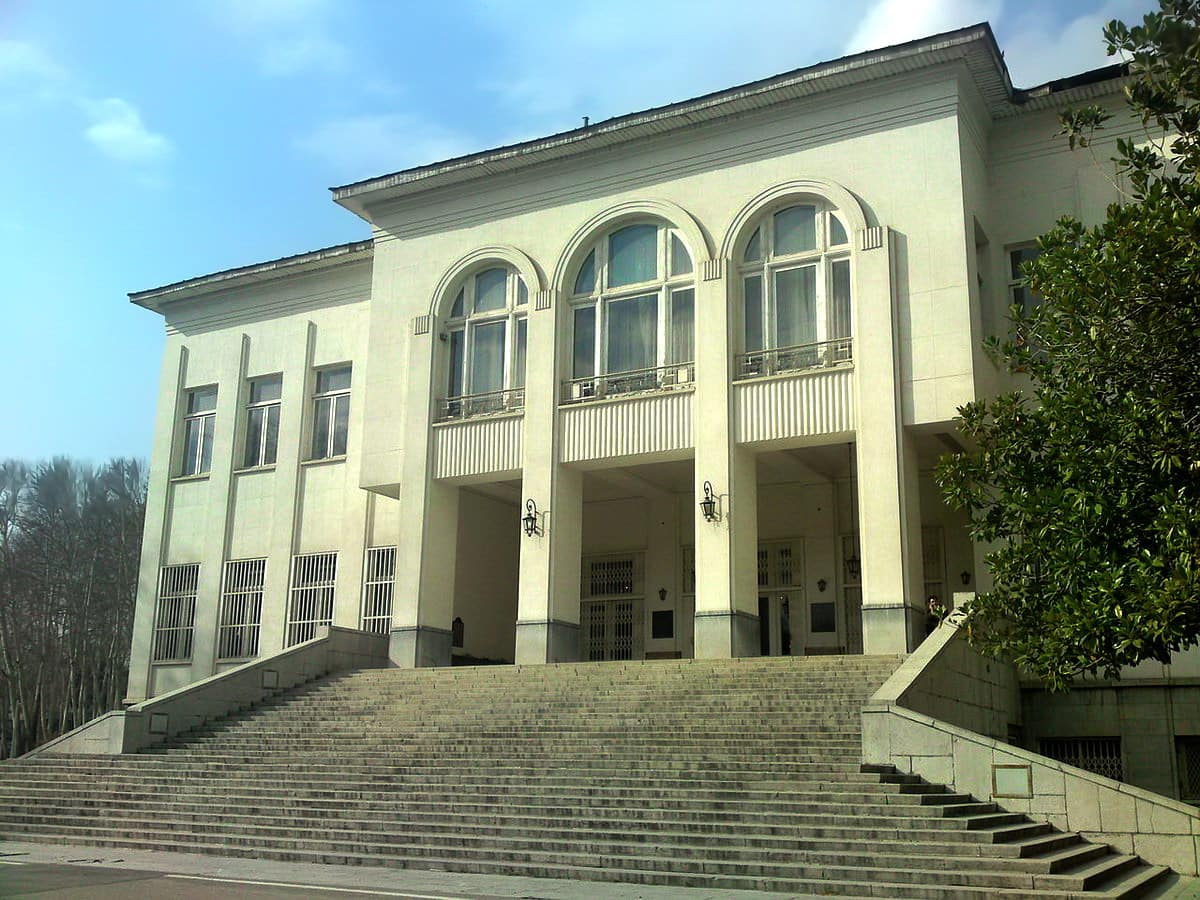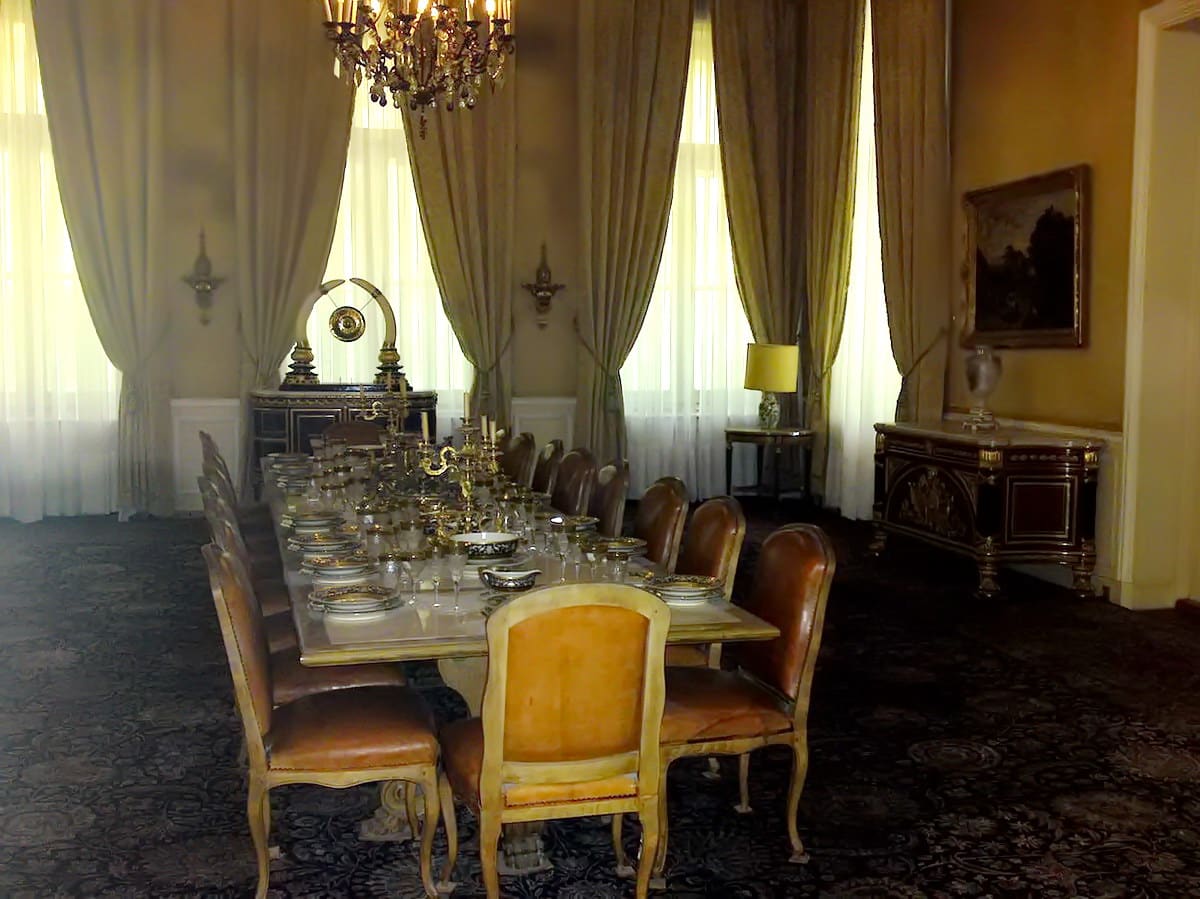Palace of the Mellat museum
The Mellat museum building with approximately 5000 square meters of square footage and more than 61 different areas (except the stairs, connecting corridors, elevator cabins, equipment parts etc.), is the largest building in the Sa complex 'd Ābād whose use dates back to the decade of the 1320 of the solar Hijra. During the previous periods, based on the historical and political conditions that occurred, this building took on other names such as the palace of the Shāh, exclusive palace, private white palace, white palace (due to the white color used in the external façade).
After the Islamic revolution, it changed its name to the Mellat museum building. It was once used as a permanent residence of Mohammad Rezā Pahlavi. Usually here official and administrative talks with politicians, princes and army generals were not planned, except in extraordinary cases and only with very important political personalities, friends and family members.
In the distance between the 1345-1349 years of the solar Hegira, the last repair, reconstruction and reinforcement work was carried out in most of the sections of this building, then a team of Iranian and foreign designers changed the interior decorations in many areas of the building, among these we mention: the preparation of the private art gallery of Farah Dibā, the creation of special storerooms for the royal service and a private wardrobe of the building, individual closets for the clothes of the Shāh and the queen in a lower floor, the installation of a lift, the building of the security and surveillance systems, the installation of new heating and cooling systems and bulletproof glass in part of the windows on the first floor.
With a quick look you can easily understand that in all the spaces of this building a combination of Iranian-European art is visible (in particular the French aristocratic style).
The building of this building was designed and built on four floors that include the basement (on the same level with the green space), the first floor, the second and the part of the attic. In these floors there are environments such as: the main entrance and adjacent to the building, the main vestibule, the main reception halls and for the ceremonies, the private study, the bedroom and the proper one of the afternoon rest, the personal wardrobes , the private toilets, the exclusive game and entertainment hall and the cinema hall, the personal art gallery, the private kitchen, the main store of the royal service, the exclusive wardrobe room and the main storage room of the clothes of the palace etc.
The artistic-architectural parameters of this palace-museum are the following: the art of stone in sections of the external and internal façade, the largest and oldest silk upholstery fabric (from the seventeenth century) in the large waiting room that hangs on the wall, the art of stucco work, the Rosenthal brand tableware collection and the Bohemian crystals, the oldest color and oil painting of this palace named "Battle of Lutzen" by Anilo Falcone dating back to the nineteenth century on the wall from the study of the Shāh, the collection of objects of play and recreation, in particular the nineteenth-century pool table, the small waiting room with murals in the style of ancient Greece, the productions of Christian Dior, the largest carpet, the chandeliers and the largest collection of over 500 pieces served in the dining room of the second-floor vestibule, the silver palm tree and the golden vase, here dri of embroidery in double silk verse, known as art SU, works by artists of China, the bronze watch with a hat hanging along with a copy of the bronze statue with the patination technique named "Kabyle coming back from the hunt ". by Arthur Waagen, German sculptor.
This palace has witnessed remarkable historical events of the period of Pahlavi according to: the holding of the wedding party of Abolrezā Pahlavi (brother of the Shāh), the failed attempt to Mohammad Rezā Pahlavi, the meeting with a group of princes and high-level generals participating in the coup d'état of the 28 mordād 1332 (solar egira), the meeting with Richard Nixon, vice president of the United States of America, with the general Eisenhower (1959) on the occasion of the CENTO pact, the interview with the Prime Minister of Romania in the period of presidency of the Republic of Nicolae Ceausescu, the donation of 351 objects to Farah Dibā and to Mohammad Rezā Pahlavi on the occasion of his coronation by heads of countries of the world (1346 Egira solar), press reviews of the Pahlavi second with the journalists on the occasion of the presentation of the ambassadors' credentials, presentation of the council of ministers, last meeting of the president of the rep of that time James Earl Carter with Mohammad Rezā Pahlavi (13556 solar egira) etc.
[/ Su_column] [/ su_row]










